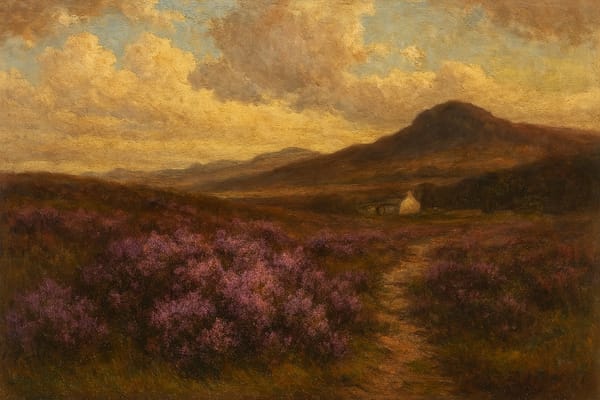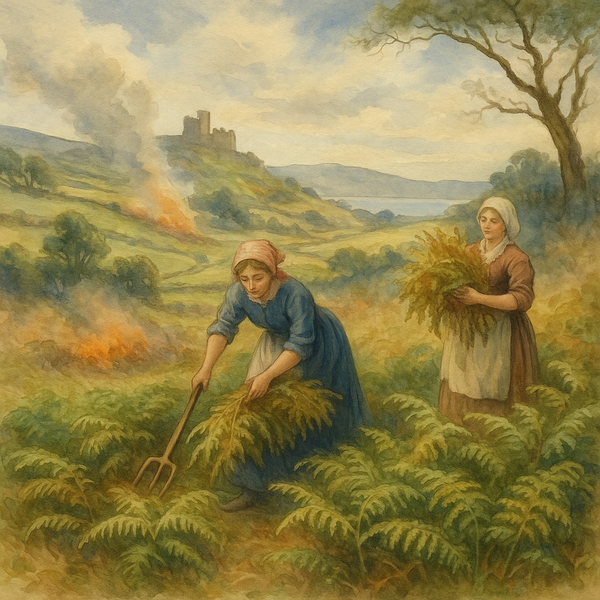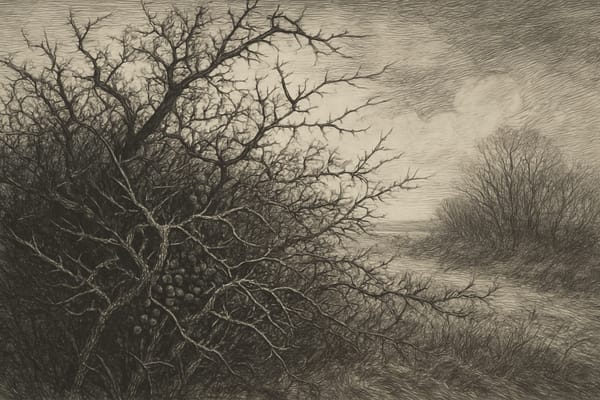Where the moorland winds weave through Cornwall’s rugged uplands, the soft purple haze of ling heather (Calluna vulgaris) has long cast a quiet enchantment over the land. Beyond its hardy beauty, this modest plant carries a weight of folklore, woven into Cornish customs, rituals, and the very spirit of protection and resilience cherished by generations.
A Natural Guardian of Home and Hearth
In Cornish folklore, ling heather holds a reputation as a guardian plant—a quiet but powerful protector against misfortune, malevolent spirits, and ill luck. Bundles of heather were hung above doorways, tied to thresholds, or even woven into simple brooms to sweep away negativity from homes and sacred spaces. The act of sweeping with a heather besom wasn’t merely domestic; it was a ritual of cleansing, a symbolic casting out of bad energy and unwelcome influences.
Legend holds that carrying a sprig of heather, particularly the rare white-blooming variety, would bring luck and offer a shield against harm—whether on life’s journeys or within the home. Weddings, in particular, often featured heather in bouquets or buttonholes as a token of happiness, protection, and enduring fortune.
Moorland Mysteries: Heather and the Hidden Folk
Cornwall’s rolling moors, carpeted with late-summer heather, are traditionally regarded as places of mystery—landscapes where the veil between worlds grows thin. According to folklore, these heathlands are the domain of the piskies and faeries. Ling heather, thriving in such liminal spaces, became deeply entwined with stories of the Otherworld.
Superstition warned against disturbing heather at dusk, lest one attract the attention of the hidden folk or be led astray in the mists. Yet with respect, heather’s presence was a sign of balance—a living boundary between human settlement and the wild, spiritual heart of the land.
Rituals of Renewal and Protection
The practical use of ling heather extended into the rhythms of Cornish ritual life. Heather brooms swept thresholds at times of change—moving house, the turn of the year, or before significant community gatherings. These acts of cleansing were believed to clear the way for new beginnings, free from lingering misfortune.
Ling was also burned in ritual fires—especially during seasonal festivals like Beltane—to purify, protect, and invoke blessings. Even in folk healing, ling heather found its place: brewed into teas for calming the spirit, used in baths for cleansing, or crafted into charms designed to guard health and happiness.
Heather in the Landscape: A Symbol of Endurance
Ling’s resilience—thriving on the poorest soils, enduring harsh winds and Atlantic storms—earned it a special place in Cornwall’s cultural imagination. It stands as a botanical mirror of the Cornish spirit: steadfast, enduring, blooming brightly even in the face of adversity.
The annual resurgence of heather’s purple bloom is seen as a sign of renewal, hope, and the quiet power of nature to reclaim and restore. Its presence on the moors is both a visual and spiritual marker of Cornwall’s rugged beauty and enduring traditions.











